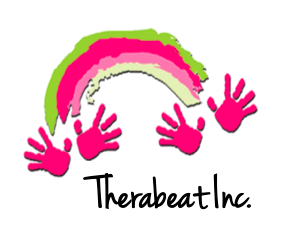In 2014, it was estimated that about 17% of the American population, or 36 million individuals, have some degree of hearing loss (Lathom & Peters, 2016, p. 175). Hearing impairment affects an individual's ability to hear and process speech, which in turn causes deficits in social and communication skills. Although hearing loss varies among individuals, at least 90% of the individuals who have hearing impairments have some degree of residual hearing (Lathom & Peters, 2016, p. 171). Hearing impairments can affect the intensity in which a sound is heard, the clarity in which the sound is heard, or both (Lathom & Peters, 2016, p. 172).
Hearing impairments are categorized based on age of onset, type of hearing loss, and degree of hearing loss (Gfeller & Darrow, 2008, p. 370). Hearing loss can be present at birth or can occur after birth. Acquired hearing losses can occur before learning a language, while learning a language, or after a language (Gfeller & Darrow, 2008, p. 371). Hearing impairments can ultimately lead to difficulty developing or maintaining communication skills, depending on when it occurs in an individual’s life.
In addition to potential deficits in communication and social skills, individuals with hearing impairments often struggle academically. Children and adolescents with hearing impairments often have poorer academic performance in comparison to their peers without a known hearing impairment (Lathom & Peters, 2016, p. 176). This may cause children and adolescents with a hearing impairment to become frustrated in the academic setting. Hearing impairments may additionally cause other issues in relation to academic learning, such as a short attention span due to difficulty concentrating on auditory activities (Lathom & Peters, 2016, p. 176).
Adults who have acquired hearing loss struggle socially, emotionally, and cognitively while executing activities in daily life. Adult individuals with hearing loss are faced with adjusting to their reduced level of hearing. This may cause them to struggle in social settings in which they once thrived due to difficulty hearing and understanding conversations. Difficulty understanding and hearing conversations may lead to an increase in social isolation (Lathom & Peters, 2016, p. 176). Acquired hearing impairments may also affect an individual’s job performance because it has become more difficult to decipher conversations.
It is a common misconception that individuals with hearing loss cannot engage and enjoy music related activities. Music therapy interventions benefit individuals with hearing impairments by assessing auditory functioning, assisting in auditory training, enhancing speech production, encouraging language development, and promoting social skills (Lathom & Peters, 2016, p. 185). Listening to musical cues allows for individuals to maximize their use of residual hearing. Music therapists working with hearing impaired clients often work to increase the client’s ability to detect the presence or absence of a sound as well as differentiating between different auditory stimuli. Musical elements, such as tempo, pitch, timbre, rhythm, and duration of sound allow for clients to exercise their auditory discrimination skills in an engaging way.
Rhythm is often used in music therapy interventions to improve speech production in clients with hearing impairments (Lathom & Peters, 2016, p. 187). Music therapists often address speech production with hearing impaired clients by aligning speech production to rhythms. Rhythmic chanting of a word or phrase allows for the client to become aware of their speech rate. Music therapists also work to improve vocal intonation and inflection by increasing awareness of pitch movements (Lathom & Peters, 2016, p. 187). Music therapy interventions can allow for a client with a hearing impairment to become aware of their speech production, improve their vocal quality, and enhance their articulation skills (Lathom & Peters, 2016, p. 189).
Individuals with hearing impairments often self-isolate due to difficulty understanding others in conversations. Music therapy interventions can improve a client’s social skills by allowing for communication in a group setting. Structured music therapy interventions such as songwriting provides opportunities for the client to engage in topic-related interactions and provide targeted responses. Singing in group settings allows for clients to participate, whether they are verbalizing the lyrics, using signed language, or using a communication device. Additionally, group settings may improve the client’s overall comfort level in social settings.
In order to provide individualized treatment, the music therapist should consult with other professionals involved in the client’s treatment, such as a speech language pathologist or audiologist, to obtain information regarding the client’s receptive and expressive communication levels (Lathom & Peters, 2016, p. 193). Music therapists should have an understanding of how a client’s assistive hearing devices work, if used. Room fixtures, such as carpeting, curtains, and upholstery can serve to minimize environmental sounds. The music therapist should also consider the client’s intensity of hearing and place them closer to sound sources if needed. Finally, the music therapist should consider the use of visual aids, tactile cues, and multisensory strategies to emphasize auditory information.
-Jasmine Bailey, Music Therapy Intern
References
Gfeller, K., & Darrow, A. (2008). Music therapy in the treatment of sensory disorders. In W. Davis, K. Gfeller, & M. Thaut (Eds.), An introduction to music therapy: Theory and Practice, (pp. 365-404). American Music Therapy Association
Lathom, W. & Peters, J. (2016). Music therapy for hearing impaired individuals. In W. Latham & J. Peters (Eds.), Peter’s music therapy (pp. 171-200). Charles C. Thomas.







